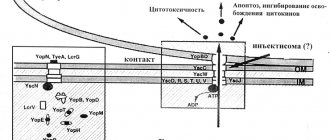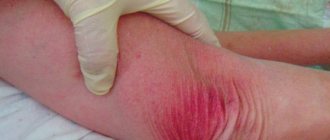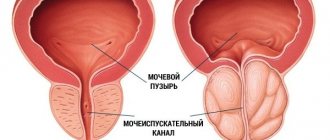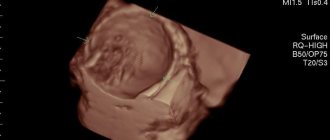Epidemiology
The main carriers of pseudotuberculosis in nature are mouse-like rodents, as well as hares. The pathogen enters the soil and water from the body of rodents. With soil particles on root crops, the pathogen is transferred to storage areas, where it finds optimal conditions for its accumulation. It accumulates intensively on vegetables in “primitive” type vegetable stores with significant fluctuations in temperature and humidity. Transmission of the pathogen to humans occurs either directly through raw vegetables, or the pathogen of pseudotuberculosis enters prepared food through equipment, utensils, utensils, or is contaminated by rodents. The accumulation of the pathogen in ready-made dishes can also occur if the cooking technology is violated or their shelf life is increased. This type of infection is not transmitted from person to person. Infection of people mainly occurs when consuming raw vegetables that have been stored for a long time in vegetable warehouses, or grown in greenhouses, where bacteria accumulate. Transmission factors in most cases are raw salads prepared in violation of the rules for processing vegetables, and most often occurs in organized groups united by a common catering unit.
Pseudotuberculosis
Pseudotuberculosis is an infectious disease caused by Yersinia pseudotuberculosis, transmitted through nutritional means and characterized by a polymorphism of clinical manifestations: intoxication, fever, damage to the gastrointestinal tract, skin, musculoskeletal system and other organs. In accordance with the International Classification of Diseases (ICD 10th revision, 1995), pseudotuberculosis is registered under the symbol A28.2, and pseudotuberculous enterocolitis is registered under the symbol A04.8.
Intestinal yersiniosis is an infectious disease caused by Yersinia enterocolitica, transmitted through nutritional means and characterized by intoxication, predominantly affecting the gastrointestinal tract; in generalized forms - multiple organ damage and a tendency to exacerbations, relapses and chronicity of the process. Yersiniosis in accordance with the International Classification of Diseases (ICD 10th revision, 1995), enterocolitis caused by Y. enterocolitica is registered under the symbol A04.6, extraintestinal yersiniosis - under the symbol A28.2.
The causative agent of pseudotuberculosis is Y. pseudotuberculosis, intestinal yersiniosis is Y. enterocolitica.
Yersinia can survive for a long time in the environment: in soil they can exist for more than 4 months, in open water - up to 1 month, in boiled water - up to 1 g. They can survive for a long time on various foods: in milk for up to 18 days. , in butter up to 145 days, on bread, confectionery - from 16 to 24 days. They multiply and persist for a long time on vegetables, especially in the form of salads, stored after cooking at low temperatures. In feces at a temperature of (22 +/- 2) °C they survive up to 7 days, in frozen feces - up to 3 months.
Yersinia is sensitive to high temperatures: at 100 °C they die within 1 - 2 minutes. Able to survive at temperatures of 50 - 60 °C for up to 20 - 30 minutes, tolerate high concentrations of sodium chloride (up to 10%), especially at temperatures from 4 to 6 °C. Direct solar radiation has a detrimental effect on microbes; they are sensitive to drying and to disinfectant solutions (1 - 3% solutions of chloramine, bleach, hydrogen peroxide).
A natural focus of yersiniosis is considered to be a certain landscape area of the territory in which the natural circulation of yersinia occurs among the wild mammals living there, mainly mouse-like rodents and birds.
The anthropurgic focus of yersiniosis is considered to be a populated area where the chain of natural circulation of Yersinia includes synanthropic (house mouse, gray rat) and semi-synanthropic (common voles, field mice) rodents that massively populate the outskirts of cities. By polluting the environment (feed, water) and being the object of hunting, rodents contribute to the infection of agricultural (cattle and small livestock, pigs), domestic (cat, dog, ornamental pets) animals and birds, as well as animals kept in nurseries and zoos.
An anthropurgic focus poses an epidemiological danger, since it poses a risk of human infection through the consumption of food products contaminated with Yersinia, as well as through professional (household) contact with agricultural and domestic animals, birds and environmental objects.
The role of animals as sources of infection for humans is unequal. In case of intestinal yersiniosis, priority is given to pigs, since it is from them that the largest number of pathogenic strains of Y. enterocolitica O:3 and O:9 are isolated. In case of pseudotuberculosis, small and large livestock are of significant importance.
A person with pseudotuberculosis does not pose an epidemiological danger; with intestinal yersiniosis, a patient or carrier in a hospital or family setting can be a source of infection for others.
The fecal-oral mechanism of transmission of yersiniosis is realized through the food route through direct (with raw and thermally poorly processed food products) or indirect (through equipment, equipment or utensils) entry of the pathogen into prepared food; secondary accumulation of the pathogen in ready-made dishes (in case of violation of the cooking technology of the latter and an increase in their shelf life); rarely - through household contact (when caring for sick agricultural, domestic or captive animals, cutting meat and poultry) and water transmission.
The main factors of transmission for pseudotuberculosis are products of plant origin (vegetables, root crops, herbs, fruits), and less commonly, water from open reservoirs. The accumulation of the pathogen on vegetables and root crops with contamination of containers, walls and floors occurs in vegetable stores and warehouses of organized groups and catering establishments, when the temperature and humidity conditions are violated and infected rodents populate. Plant products are subject to infection when stored for storage with an increase in contamination with the pseudotuberculosis microbe in February (winter vegetables), April-May (early vegetables, including greenhouse vegetables) and August-September (summer vegetables). Plants can become infected with Yersinia during cultivation (in fields, in greenhouses) by contact with soil and by watering from a water source contaminated with the pathogen. In this case, there may be no direct connection between diseases and rodents, since epizootics among them and primary infection of vegetables occur far from the place where group diseases are recorded.
In intestinal yersiniosis, the leading transmission factors are products of animal origin (dairy products, meat and meat products, poultry products), consumed raw or thermally insufficiently processed or secondary contaminated. The importance of vegetables and fruits as factors of infection transmission is lower than with pseudotuberculosis.
A condition conducive to human infection with Yersinia is a violation of the sanitary and epidemiological regime in the catering units of organized groups and public catering establishments. For pseudotuberculosis, this means poor-quality peeling of vegetables, soaking vegetables overnight, lack of repeated rinsing with hot water, storing prepared salads in the refrigerator. In case of intestinal yersiniosis - violation of the regime for collecting and processing meat and dairy products, long-term storage of raw products contaminated with the pathogen at low temperatures, insufficient heat treatment, violation of the deadlines for the sale of ready-made dishes, violation of the milk pasteurization regime. Infection of persons professionally associated with livestock and poultry farming is possible when removing internal organs, cutting animal meat (cutting out the tongue and tonsils, cutting meat from the head) and poultry carcasses, and during the preparation of semi-finished products.
The incidence of pseudotuberculosis and intestinal yersiniosis is recorded everywhere, but unevenly.
On the territory of the Russian Federation, group cases of pseudotuberculosis are more often recorded, occurring in preschool institutions, schools, boarding schools, in suburban children's groups, military units, in enterprises or in educational institutions united by a single power source. Intestinal yersiniosis is characterized by sporadic incidence; group cases are rare. There may be nosocomial diseases in patients with reduced body resistance associated with blood transfusions stored for a long time at low temperatures, and intrafamily cases limited to children and relatives caring for them.
Pseudotuberculosis and intestinal yersiniosis affect all age groups, but the majority of cases occur in children aged 3–6, 7–14 years and adolescents aged 15–17 years. The incidence of children under 1 year of age with pseudotuberculosis is associated with the inclusion of vegetables and fruits (juices, purees) in the diet; with intestinal yersiniosis - artificial feeding, household contact with the patient (carrier).
Pseudotuberculosis is characterized by an extension of the seasonal rise in incidence until the summer months, the timing of which depends on the time of delivery, storage and sale of vegetables to the population. With intestinal yersiniosis, there is a slight spring-summer and pronounced autumn-winter increase in incidence.
In order to localize and eliminate the source of yersinia infection, a set of sanitary and anti-epidemic (preventive) measures is carried out. It includes:
- Active identification of patients by questioning, examination and door-to-door (door-to-door) visits;
- Medical observation of persons who are in the same conditions as the patient regarding the risk of infection (18 days);
- Taking material from patients and suspects of the disease, as well as samples from environmental objects for bacteriological, serological and molecular genetic studies (PCR);
- The introduction of a temporary ban on the preparation of cold meat snacks and dairy products that are not subject to heat treatment; the consumption of salads made from raw vegetables and fruits without processing is prohibited;
- Organizing in warehouses (vegetable storehouses, catering units) sorting, stripping of vegetables, fruits, stripping of containers and equipment, followed by final disinfection;
- In the event of widespread distribution of rodents in a populated area, the issue of carrying out complete deratization for epidemic indications is decided;
- Introduction of enhanced supervision over the water supply system, landscaping, catering and compliance with the anti-epidemic regime of children's organized groups, catering units of public catering establishments and medical and preventive organizations;
- Organization of work with the media on the prevention of yersiniosis among the population on the initiative of the bodies exercising state sanitary and epidemiological surveillance.
Patients are discharged after complete clinical recovery and normalization of all indicators of the functional state of those who have recovered from the disease, without conducting control laboratory tests for pseudotuberculosis and intestinal yersiniosis, according to the decision of an infectious disease specialist.
Recovered persons are monitored at a clinic. Monitoring of ill children is carried out by local pediatricians, for adults - by infectious disease doctors at the clinic, and in their absence - by local therapists. Dispensary observation is carried out for 1 month after discharge from the hospital for uncomplicated forms, for a protracted course - for at least 3 months.
Admission to work for staff of children's institutions and children to attend children's organized groups is carried out on the basis of a certificate of recovery.
In order to prevent contamination and proliferation of Yersinia on vegetables in vegetable stores, fruit and vegetable stores, and greenhouses, the following activities are carried out:
- Vegetable and fruit storage facilities are being prepared for receiving new crops for storage: storage facilities are being emptied of remnants of winter vegetables and debris; drying and disinfection of racks, walls, ceilings and equipment, followed by ventilation and whitewashing. The effectiveness of disinfection is assessed by the absence of microbes of the genus Yersinia in the washings.
- Vegetable storage facilities must maintain a certain microclimate with strict temperature parameters not exceeding 4 °C and relative humidity up to 70%.
- Maintaining the sanitary and hygienic condition of fruit and vegetable warehouses, timely clearing them and the surrounding area from vegetable residues and industrial waste, disinfecting containers before sending them to product suppliers.
- Maintaining in satisfactory sanitary and technological condition automobile and other types of transport intended for the transportation of vegetables and fruits.
- Timely and high-quality sorting of vegetables, thorough cleaning of spoiled and rotting areas of vegetables and fruits.
- Preventing the joint storage of vegetables (fruits) of new and old harvests, preparing a separate room for storing early vegetables with regular (once a month) cleaning and disinfection.
- Compliance with greenhouse processing technology, including soil after harvest, cleaning dirty and replacing worn-out containers.
- Regular implementation of deratization measures and basic measures to protect the facility from rodents in accordance with current regulatory legal documents.
- In vegetable storehouses, fruit and vegetable warehouses and greenhouses, as part of production control, regular studies are carried out to identify rodents infected with Yersinia (quarterly), the contamination of vegetables, fruits, utensils, containers, equipment with Yersinia (taking into account the epidemiological situation, but at least once a quarter), in greenhouses - during the harvest period. If pathogens are detected, unscheduled disinfection, deratization, sorting of fruits and vegetables, cleaning or replacement of racks and containers are carried out.
- In vegetable storehouses of organized groups and medical institutions, laboratory tests for the contamination of vegetables, fruits, utensils, containers, and equipment with Yersinia are carried out 2 - 3 weeks after the planting of new crop vegetables and before delivery of early vegetable products for storage.
(material prepared on the basis of Sanitary Rules 3.1.7.2615-10 “Prevention of Yersiniosis”)
Clinical manifestations of pseudotuberculosis
The clinical picture of this disease is so diverse that it can occur under the guise of such infections as ARVI, scarlet fever, measles, viral hepatitis, acute intestinal infections, rheumatism (if the articular form), allergic dermatitis. The most difficult thing is to deal with atypical or erased forms, because due to specific treatment not prescribed in time, recovery may be delayed, or the disease may become chronic. In most cases (95%) the disease begins acutely. Children complain of weakness and headache, muscle and joint pain. Body temperature reaches febrile levels - 38 C - 39 C, which is often accompanied by chills. Catarrhal syndrome is also characteristic: coughing, runny nose, redness of the mucous membrane of the oropharynx (mask of ARVI or FLU). Also, changes in the gastrointestinal tract are among the first to be recorded: children have decreased appetite, nausea, less often single vomiting, 2-3 loose stools, the tongue is covered with a thick white coating.
Abdominal pain is also typical, especially in the right iliac region. Considering the increase in temperature, acute appendicitis can be suspected, and then such patients are admitted to a surgical hospital, where they undergo surgical treatment, and when examining the removed appendix, inflammatory changes are revealed. Also, in most patients the size of the liver increases, but signs of hepatitis are detected only in isolated cases. In the first three days of the disease, a rash appears, redness of the skin of the face and neck is noted - the “hood” symptom, swelling and redness of the feet and palms - the “gloves” and “socks” symptom. In some patients, the rash may be measles-like and accompanied by itching. This rash is recorded more often in young children and with a history of allergic reactions. The rash is located around the joints, on the anterolateral surfaces of the body, legs, and less often in the upper chest and neck. After the rash subsides, fine lamellar peeling of the skin of the fingers and toes appears. As with all infectious diseases, there are 3 main forms: mild, moderate and severe. Up to 25% of cases have a wave-like course of the disease with exacerbations and relapses. Chronic forms of pseudotuberculosis in children are extremely rare. As a rule, against the background of immunodeficiency states.
Forms of the disease
In Russia, the Yushchuk classification of pseudotuberculosis has been adopted.
Clinical forms:
- abdominal - with damage to the liver, intestines;
- mixed - proceeds like scarlet fever or sepsis;
- secondary focal - the skin and joints are affected.
By severity:
- light;
- moderate severity;
- heavy.
If the disease lasts up to 3 months, it is called acute. If it lasts more than 6 months, it is a chronic form.
Treatment of tuberculosis
Treatment of tuberculosis is always carried out comprehensively, taking into account the age of the child, the severity and period of the disease, and the leading syndrome. The diet should be complete and age appropriate. And pathogenetic therapy is aimed at eliminating changes in organs and systems caused by the disease. Therefore, the question of the duration of treatment, courses of a/b therapy, and the use of immunomodulators always remains within the competence of the doctor. And among the preventive measures today, the only and most important remains undoubtedly: strict adherence to a set of sanitary and hygienic storage standards, processing technology and deadlines for the sale of finished products, especially vegetable ones; rodent control. And at home - thoroughly washing vegetables, herbs and fruits, removing rotten and slimy areas.
Treatment
Infectious disease specialists treat pseudotuberculosis. Mild forms of the disease can be treated on an outpatient basis. Clinical indications for inpatient treatment:
- severe malaise with high fever;
- severe damage to internal organs;
- presence of severe concomitant diseases;
- signs of complications.
The duration of inpatient treatment is 14-20 days, depending on the severity of the disease.
The diet is prescribed depending on the clinical form. In the mixed version, table No. 13 is shown - general therapeutic nutrition. If the gastrointestinal tract is affected - table No. 4 with a limit on spicy, fried, fatty, marinades.
Antibiotics should be started as early as possible. Drugs of choice:
- fluoroquinolones;
- III generation cephalosporins;
- chloramphenicol for the development of meningitis.
In addition, pancreatin, bifidobacterin, and Acipol are prescribed.
Antibiotics for the secondary focal form are prescribed only when signs of increased infection appear. Basic treatment:
- indomethacin;
- diclofenac;
- Hydroxychloroquine.
For the abdominal form, treatment is carried out jointly with surgeons. If there are signs of appendicitis, the appendix is removed.
In case of severe intoxication, intravenous administration of a solution of glucose and sodium chloride is prescribed. Vitamins, antioxidants, and methyluracil are indicated to restore the intestinal mucosa.
The total duration of sick leave is 18-25 days. If the disease recurs or a secondary focal form develops, the period of disability increases to 4-6 months.
Prevention of pseudotuberculosis
Prevention of pseudotuberculosis, like many other infectious diseases, consists of following basic rules to prevent infection by the causative agents of these infections. To prevent pseudotuberculosis when eating raw vegetables and root vegetables, they should be thoroughly processed. It is necessary to rinse the vegetables in warm water, remove any remaining soil with a knife and cut out all rotten, slimy and softened areas, then rinse again with water and scald with boiling water. To cut raw vegetables you need to have special equipment.
To prepare salads from raw vegetables, it is allowed to use vegetables from the previous year's harvest only until March. It is recommended to soak raw vegetables and herbs intended for preparing cold appetizers without subsequent heat treatment in a 3% solution of acetic acid or a 10% solution of table salt for 10 minutes, followed by rinsing with running water.
Diagnostics
It is quite difficult to identify pseudotuberculosis by symptoms if this is an isolated case of the disease. Similar symptoms are observed with scarlet fever, appendicitis, and pancreatitis. If an outbreak of disease occurs, clinical diagnosis is not difficult. Confirm the diagnosis with laboratory tests. Ultrasound, ECG and other studies are prescribed to determine the extent of damage to internal organs.
Mandatory laboratory tests for pseudotuberculosis:
- complete blood count - increase in leukocytes, monocytes, eosinophils, ESR;
- biochemical blood test - increase in liver enzymes ALT and AST, bilirubin;
- feces for pseudotuberculosis - detection of bacteria or their antigens;
- blood for antibodies to pseudotuberculosis.
To confirm the diagnosis, the bacteriological method is used predominantly. Bacteria are found in feces, urine, blood, and nasopharyngeal mucus. An early diagnostic method is the detection of bacterial antigens in biological material from a patient. Blood tests for antibodies are carried out twice with an interval of 10-14 days.
Diagnosis, treatment, prevention
To diagnose pseudotuberculosis, two methods are used: bacteriological and serological. Materials for bacteriological analysis are: feces, blood, cerebrospinal fluid, as well as examination of lymph nodes and the appendix.
To determine pseudotuberculosis antigens in stool and other material, enzyme-linked immunosorbent assays are also used.
RIGA with immunoglobulin diagnostic kits is used as express diagnostics.
Treatment and prevention of pseudotuberculosis
To treat pseudotuberculosis, antibiotics, sulfonamides and chemotherapy are used. The duration of treatment depends on the form of the disease: for a localized form, 7-10 days, for a generalized form, at least 12-14 days. Rehydration preparations in the form of solutions can be used - glucose-electrolyte and polyionic.
Sometimes, if indicated, surgical treatment is performed.
Prevention of pseudotuberculosis consists of monitoring where vegetables are stored, controlling rodents, monitoring transportation, preparation of food products, as well as prohibiting the use of certain vegetables, such as cabbage and carrots, in their raw form, that is, without heat treatment, etc. . It is also worth constantly monitoring the water supply and, if necessary, carrying out sanitary supervision. There is no vaccine against pseudotuberculosis.
Pseudotuberculosis or Far Eastern scarlet-like fever is a rather serious disease, but with timely consultation with a doctor and timely treatment, recovery will be easier. Self-medication is unacceptable! Take care of yourself and your loved ones and be healthy!
Tuberculosis and pseudotuberculosis - what is the difference?
Pseudotuberculosis got its name because its symptoms can be identical to tuberculosis, in addition, they have other similarities. For example, during a histological examination, granulomas are found on the affected organs, which appear during tuberculosis. The bacterium Yersinia pseudotuberculosis, which is the causative agent of pseudotuberculosis, is similar in structure to the bacterium Yersinia enterocolitica, which causes tuberculosis. The symptoms of these diseases may be identical, since in most cases they cannot be distinguished clinically. But there is a special form of pseudotuberculosis, which we will talk about today - Far Eastern scarlet-like fever.
The pseudotuberculosis bacterium, or rather some of its strains, release a special toxin that causes effects similar to toxic shock syndrome from Staphylococcus aureus and group A streptococcus. The same toxin develops scarlet fever. This bacterium can also cause Kawasaki disease.
Strains of this bacterium are mainly located in Russia and Japan. Since the first outbreak of pseudotuberculosis was registered in Vladivostok, the prefix “Far Eastern” appeared from here.
The bacterium is characterized by survival at low temperatures - it continues to grow and multiply even in the refrigerator, even when re-frozen. It can live in water for 8 to 12 months, in bread and butter for up to 5 months, in sugar for 3 weeks, and in milk for 1 month. In soil, the bacterium can survive up to 1 year.
Prognosis and complications
Favorable for mild to moderate disease, complete recovery occurs. In severe cases, death and complications may develop. No special rehabilitation is required. After recovery, visiting local sanatoriums is recommended.
Complications develop rarely:
- toxic shock;
- intestinal obstruction;
- meningitis;
- renal failure;
- myocarditis;
- pneumonia;
- Quincke's edema;
- arthritis.
The lack of antibacterial treatment is dangerous because relapses and exacerbations of the disease develop more often, and the likelihood of pseudotuberculosis becoming chronic is high.









